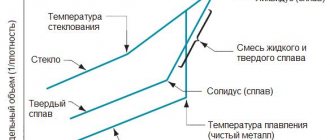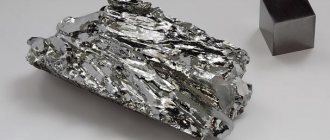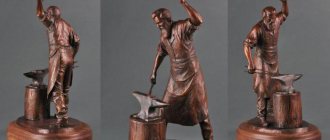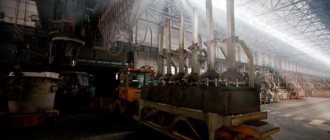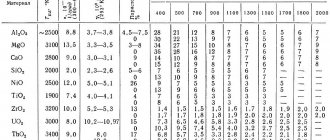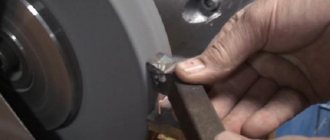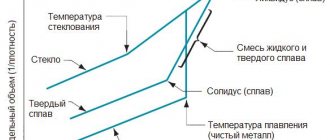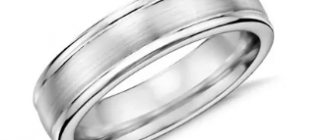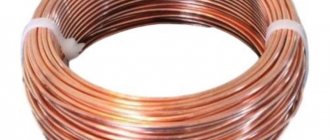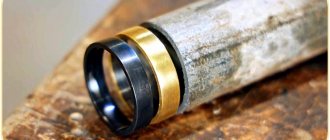06/29/2020 Author: VT-METALL
Issues discussed in the material:
- Brief characteristics of aluminum and its alloys
- Classification of aluminum alloys
- About the marking of aluminum alloys
- 4 ways to process aluminum alloys
- Main groups of aluminum alloys and their properties
- Aluminum alloys with other elements
- Areas of application of aluminum alloys
Aluminum alloys are used much more often than the same metal in its pure form. And this is not surprising: they have much greater strength, as well as resistance to corrosion and high temperatures.
Combinations with various substances endow certain alloys with specific characteristics. Depending on the requirements for the final product, one or more alloying elements are added to aluminum. And to avoid confusion, the resulting alloy is marked in a certain way. That is, the customer can only choose the most suitable metal for his needs.
Brief characteristics of aluminum and its alloys
Aluminum was first obtained by chemists from Denmark (Oersted) and Germany (Wöhler) in 1825 and 1827, respectively. It became possible to produce metal on an industrial scale in 1886 thanks to the developments of the American Charles Hall and the Frenchman Paul Héroult. The cost of aluminum until the end of the 19th century was only slightly inferior to gold.
At the beginning of the last century, aluminum was used only in its pure form. In 1906, the German scientist Wilm thermally strengthened the metal by adding copper (4%), magnesium (0.5%), and manganese (0.5%). This is how the first alloy appeared - duralumin. Aluminum alloys, which, in addition to high strength, have low density, are widely used in industry at present.
The specific strength of aluminum joints (the ratio of tensile strength to density) is significantly higher than that of steels. Due to this, aluminum compounds are widely used in rocket and aircraft construction.
The metal and its alloys are characterized by high manufacturability and ease of deformation, which makes it easy to create parts of complex configurations. The advantages of the material also include corrosion resistance and good electrical conductivity (this characteristic is higher only in silver, copper and gold). The use of aluminum alloys in electronics and electrical engineering is due to the ease of rolling them into foil.
We recommend articles on metalworking
- Steel grades: classification and interpretation
- Aluminum grades and areas of their application
- Defects in metal products: causes and search methods
Due to the low melting point when processing the material, significant energy costs are not required; accordingly, production and products have low costs.
Alloy of the aluminum-manganese system and products made from this alloy
The invention relates to metallurgy, in particular to aluminum-based alloys of the Al-Mn system, for the production of thin cold-rolled sheets used for subsequent cold forming in products of complex shape, such as vessels, containers, cans, etc., including welded structures. An alloy and a product made from it are proposed, containing the following components, wt.%: manganese 0.3-1.5, iron 0.05-0.9, nickel and/or cobalt 0.001-0.3, at least one element from the group including titanium, chromium, zirconium, scandium, vanadium, molybdenum, hafnium, boron or carbon 0.00001-0.35, aluminum the rest, with Mn/Fe>l, Mn/(Co and/or Ni)2 . In cases of the invention, it can be made in the form of a vessel, a heat exchanger or as part of a can for storing drinks. The technical result of the invention is to reduce the anisotropy of the mechanical properties of thin cold-rolled sheets, as well as increase their strength properties and ductility, expand the range of manufactured products, reduce the labor intensity of their production, increase the service life of products, increase the yield during cold stamping or deep drawing. 2 s. and 4 salaries, 2 tables.
The invention relates to the field of metallurgy, in particular to alloys of aluminum alloys of the Al-Mn system in the form of thin cold-rolled sheets used for subsequent cold forming in products of complex shape, such as vessels, containers, cans, etc., including for welded structures .
Alloys of the Al-Mn system are widely used in various fields of industry due to their good corrosion resistance and solderability. These are primarily domestic alloys AMts, AMtsS, MM, D12, as well as their foreign analogues. Patent US 2001032688 discloses an alloy of the aluminum-manganese system, containing the following components, wt.%: Silicon - 0.05-0.5 Iron - 0.05-1.0 Manganese - Up to 2 Zinc - Up to 0.1 Nickel - Up to 0.1 Magnesium - Up to 0.1 Copper - Up to 0.5 Chromium - 0.03-0.5 Titanium - 0.03-0.35 Aluminum - The rest is the ratio Mn/Fe=2-6, and Cr/Ti=0.25-2.0. This the alloy is made in the form of either a round solid or round hollow ingot for subsequent extrusion and is highly resistant to intergranular corrosion and is intended for the manufacture of heat exchanger pipes by extrusion. The disadvantages of this alloy include the fact that it cannot be used to produce products of complex shapes by cold molding of thin sheets. GOST 4784-97 discloses an alloy of the aluminum-manganese system for the production of thin sheets (AMts), containing the following components, wt.%: Silicon - Up to 0.6 Iron - Up to 0.7 Copper - 0.05-0 .20 Manganese - 1.0-1.5 Zinc - Up to 0.1 Titanium - Up to 0.2 Aluminum - The rest. The disadvantages of this alloy include high anisotropy of mechanical properties, as well as insufficiently high values of ductility and strength, which during subsequent cold stamping of thin sheets leads to the appearance of micro-tears, reduces the service life of the product, limits the range of manufactured products and increases the complexity of their manufacture. The objective of the invention is to reduce the anisotropy of the mechanical properties of thin cold-rolled sheets, as well as increase their strength properties and ductility, which expands the range of manufactured products and reduces the complexity of their production increases the service life of the products, increases the yield during cold stamping or deep drawing. The problem is solved by the fact that the alloy of the aluminum-manganese system for the production of thin sheets, containing manganese, iron and a modifying additive, additionally contains nickel and/or cobalt , and as a modifying additive at least one element selected from the group including titanium, chromium, zirconium, scandium, vanadium, molybdenum, hafnium, boron or carbon in the following component ratio, wt.%: Manganese - 0.3-1 .5 Iron - 0.05-0.9 Nickel and/or cobalt - 0.001-0.3 At least one element selected from the group consisting of titanium, chromium, zirconium, scandium, vanadium, molybdenum, hafnium, boron or carbon - 0.00001-0.35 Aluminum - the rest at the ratio Mn/Fe>1, Mn/(Co and/or Ni)2. In particular embodiments of the invention, the problem is also solved by the fact that the alloy additionally contains at least one element selected from a group containing magnesium, copper and zinc in an amount of 0.03-1.5%. The problem is also solved by a product made of a thin sheet of the proposed alloy. The product can be a vessel or a part of a heat exchanger or at least one of the parts of a jar for storing drinks. The essence of the invention is as follows. In known alloys, manganese dissolved in a solid solution of aluminum and dispersed particles of the AlxMn phase released from it along the grain boundaries (for example, Al6Mn) increase the temperature at which recrystallization begins and impede the movement of low-angle grain boundaries. This is associated with the production of a non-recrystallized fibrous structure in the sheets. During cold hardening deformation of sheets, a deformation texture appears. The direction of the fiber of the non-recrystallized structure coincides with the direction of the deformation texture. This leads to anisotropy in the properties of cold-rolled sheets. The composition of the proposed alloy is selected in such a way that Co and/or Ni form a solid solution in the Al6Mn phase. The concentration of manganese in the aluminum solid solution decreases, and the volume fraction of the Al6Mn phase decreases. This leads to a decrease in the temperature at which recrystallization begins, facilitates the movement of low-angle grain boundaries, and ultimately leads to the formation of a fine-grained recrystallized structure. During hardening cold deformation, the appearance of a deformation texture in cold-rolled sheets with a recrystallized structure does not create conditions for the occurrence of anisotropy of properties, so the material becomes isotropic. The dispersed Al6Mn phase (Co and/or Ni) formed instead of the Al6Mn phase is separated, in contrast to the Al6Mn phase, not along the grain boundaries, but along the grain body, creating additional strengthening of the solid solution. In addition, Co and/or Ni are part of the insoluble Al6FeMn phase , forming the Al6FeMn(Co and/or Ni) phase. This new phase, in contrast to the Al6FeMn phase, which has the shape of rough plates, has a globular shape, which also helps to increase ductility and strength and reduce anisotropy. The optimal structure contains at least 0.5% intermetallic compounds associated with Fe, Mn, Ni and/or Co. The presence in the alloy of such elements as Ti, Cr, Zr, Sc, V, Mo, Hf, B, C in the indicated quantities leads to to the grinding of recrystallized grains in sheets before their cold hardening deformation, which makes it possible to increase the strength of these sheets and their ductility. The most favorable ratios for each of the listed components are the following: Titanium - 0.008-0.25 Chrome - 0.003-0.35 Zirconium - 0.008 -0.15 Scandium - 0.001-0.25 Vanadium - 0.001-0.15 Hafnium - 0.001-0.15 Molybdenum - 0.001-0.15 Boron - 0.0001-0.06 Carbon - 0.00001-0.01 The content of impurities in the alloy should not exceed the following values, wt.%: lead 0.05, cadmium 0.05, bismuth 0.05, tin 0.05, potassium 0.05, sodium 0.05, lithium 0.05, calcium 0.05, barium 0.05, silicon 0.6, gallium 0.05, hydrogen 2.5x10-5, beryllium 0.005, sulfur 0.005, fluorine 0.05, cerium 0.05. The elements Mg, Cu, Zn are included in solid solution, help increase the strength of thin sheets without compromising the anisotropy of properties, and also increase corrosion resistance and weldability. All this leads to the production of thin cold-rolled sheets with higher strength properties, ductility and low anisotropy, which leads to increased service life of products, expanding the range of products made from the alloy, reduces labor costs for their production. Examples: Flat ingots with a cross-section of 100x550 mm were cast, the chemical composition of which is given in Table 1. The ingots were homogenized at a temperature of 600oC for 6 hours, hot deformation by rolling was carried out at a temperature of 490oC to a thickness of 6 mm. Sheets 6 mm thick were annealed at a temperature of 450°C for 3 hours, after which they were rolled to a thickness of 2.0 mm. After which the sheets were re-annealed at a temperature of 450oC for 3 hours and after preparing the surface, the final cold deformation was carried out by rolling to a thickness of 0.29 mm, i.e. with a degree of more than 85%. The mechanical properties of the sheets in the longitudinal and transverse directions are given in Table 2. As can be seen from Table 2, the proposed alloy, in comparison with the known one, has strength properties higher by 15-20%, and ductility higher by 30-40%. In addition, the anisotropy of properties, defined as the difference between the properties in the longitudinal and transverse directions, the proposed alloy is 7-10 times lower than the known one. Thus, the invention makes it possible to increase the strength properties and ductility of thin cold-rolled sheets, as well as to reduce the anisotropy of their properties, which as a consequence allows increase the service life of products, expand their range, reduce labor costs for the manufacture of products.
Claim
1. An aluminum-based alloy for the production of thin sheets, containing manganese, iron and a modifying additive, characterized in that it additionally contains nickel and/or cobalt, and as a modifying additive at least one element selected from the group including titanium, chromium, zirconium, scandium, vanadium, molybdenum, hafnium, boron or carbon in the following ratio of components, wt.%: Manganese 0.3-1.5 Iron 0.05-0.9 Nickel and/or cobalt 0.001-0.3 At least , one element from a group including titanium, chromium, zirconium, scandium, vanadium, molybdenum, hafnium, boron or carbon 0.00001-0.35 Aluminum The rest with Mn: Fe>l, Mn: (Co and/or Ni) 2.2. The alloy according to claim 1, characterized in that it additionally contains 0.03-1.5 wt.% of at least one element from the group containing magnesium, copper and zinc.3. An aluminum-based alloy product made from a thin sheet, characterized in that it is made from an alloy according to claim 1 or 2.4. The product according to claim 3, characterized in that it is made in the form of a vessel.5. The product according to claim 3, characterized in that it is made in the form of a heat exchanger.6. The product according to claim 3, characterized in that it is made in the form of a part of a can for storing drinks.
DRAWINGS
Classification of aluminum alloys
A large number of different characteristics are used to classify aluminum alloys. Depending on the type of auxiliary elements, the following types are distinguished:
- with the addition of additives, which are various materials, for example, magnesium, zinc, chromium, silicon and others.
- with the addition of intermetallic compounds - such compounds contain several metals, for example, copper and magnesium, lithium and magnesium.
Aluminum alloys may contain many elements that give the material certain performance characteristics.
According to the metalworking method, the following types of aluminum compounds are distinguished:
- Wrought aluminum alloys are hard compounds that, due to their high ductility, can be processed by pressing or forging. The performance characteristics of the material are improved by additional processing.
- Foundry - entering production in a liquid state, they are processed after they harden. Case parts of various configurations are made from cast aluminum alloys.
A separate group is represented by technical aluminum, containing less than 1% of foreign impurities. This composition leads to the formation of an oxide film on the surface of the metal, protecting it from the negative effects of the environment. At the same time, the strength characteristics of technical aluminum are quite low.
Depending on the strength of the connection there are:
- super-strong (from 480 MPa);
- medium-strength (from 300–480 MPa);
- low-strength (up to 300 MPa);
A separate group is represented by duralumins, which have special performance properties.
Marking of aluminum alloys
When determining the grade of aluminum alloys, you may encounter certain difficulties. Marking is carried out in such a way that no questions arise when clarifying the connection. The compositions have a specific alphanumeric designation.
Features of the marking are as follows:
- at the beginning there are one or more letters indicating the composition of the compound;
- markings include a digital serial number;
- The marking may also end with a letter indicating the characteristics of the material processing (for example, thermal).
Let's get acquainted with the marking rules using the example of the D17P alloy. The first letter D indicates the composition of the alloy - duralumin. All duralumin contains certain chemical elements that differ in quantitative content. Serial number 17 indicates a specific material with certain properties. The letter P at the end of the marking is used to indicate the method of processing a semi-hardened joint obtained under pressure without preheating the metal; accordingly, the strength characteristics will be half of the maximum possible.
Marking of aluminum alloys is carried out in accordance with GOST 4784-97, which defines the basic requirements for the designation of connections.
Main groups of aluminum alloys and their properties
To work with aluminum and its compounds, it is necessary to become familiar with the properties of the metal, since they significantly affect the scope of application of the parts and the characteristics of the material. Earlier we talked about the classification of aluminum alloys.
Next, we will talk about the most common types of metal and their properties.
- Alloys with aluminum, copper and silicon.
The compound is also known as alcusine. Alloys containing copper and silicon are used to make parts of industrial equipment. Excellent technical properties allow them to be used under constant load conditions.
- Aluminum-copper alloys.
The technical characteristics of compositions containing copper are comparable to low-carbon steels. The main disadvantage is poor corrosion resistance. The parts are coated with a protective compound that protects them from the negative effects of the environment. To improve the qualities of the material, alloying components (manganese, iron, magnesium and silicon) are used.
- Aluminum-silicon alloys.
These compounds are called silumin and are used for the production of decorative elements. To improve the characteristics of aluminum alloys, sodium and lithium are used.
- Aluminum-magnesium alloys.
The presence of magnesium in the composition increases the strength characteristics of the material and also facilitates the welding process. The magnesium content should not exceed 6%. A higher percentage will reduce the anti-corrosion properties of the joint. To increase strength without reducing corrosion resistance, manganese, vanadium, chromium or silicon are added to the compositions. Each additional percentage of magnesium improves strength by 30 MPa.
- Aluminum-manganese alloys.
To increase corrosion resistance, manganese is added to the compound. Thanks to it, the strength and weldability of the material are increased. In addition to manganese, iron and silicon are added to the composition.
- Alloys with aluminum, zinc and magnesium.
Aluminum alloys with magnesium and zinc are distinguished by their high strength characteristics and ease of processing. To improve the properties of the material, it is subjected to heat treatment. The disadvantage of such compounds is their low corrosion resistance. To correct this disadvantage, an alloying component is used - copper.
- Avial.
These alloys, in addition to aluminum, contain magnesium and silicon. The connections are characterized by high ductility and corrosion resistance.
Production
The alloy manufacturing process is carried out using high-tech equipment: blast furnaces, firing chambers and much more. Liquid metal is poured into molds and placed in a firing chamber. In this process, the alloy loses its properties and becomes soft.
After this, it is subjected to a natural aging procedure. It lasts no more than 24 hours at an air temperature of +20 degrees. There is also an artificial aging procedure. To do this, the alloy is placed in a special chamber. The process takes about 3-4 hours.
Note. Only after passing through all stages of production does duralumin acquire high strength and reliability.
It is worth noting that an alloy with a natural aging process is considered to be of higher quality. Its service life is much longer than that of metal with an artificial aging procedure.
Aluminum alloys with other elements
Alloying elements used in the manufacture of aluminum alloys and improving their quality characteristics are also the following.
Beryllium reduces oxidation during heat treatment. The low beryllium content (0.01–0.05%) improves the fluidity of aluminum compounds used in the production of internal combustion engine parts (pistons and cylinder heads).
Bismuth, as well as lead, tin or cadmium, which have a low melting point, when added to alloys, facilitate the process of cutting metal. These components contribute to the formation of soft, fusible phases, which ensure chip brittleness and cutter lubrication.
Compounds with added gallium (0.01–0.1%) are used to produce sacrificial anodes.
A small amount of iron (no more than 0.04%) is added to the material used to make wires, thereby increasing the strength and creep of the material. In addition, iron reduces the adhesion of the composition to the walls of molds when casting into a chill mold.
Aluminum production
In nature, aluminum can be found in rocks. Bauxite is considered the most saturated. The production of this metal can be divided into several stages:
- First of all, the ore is crushed and dried.
- The resulting mass is heated over steam.
- The treated mixture is poured into alkali. During this process, aluminum oxides are released from it.
- The composition is thoroughly mixed.
- Next, the resulting alumina is exposed to electric current. Its power reaches 400 kA.
The last step is casting aluminum into molds. At this point, various components can be added to the composition that change its characteristics.
Areas of application of aluminum alloys
Aluminum alloys are widely used in many fields. Their performance characteristics make them one of the five most common metal compounds.
First, due to their lightness and strength, they began to be used in the production of airships and aircraft.
Currently, due to the high melting point, aluminum compounds are used in the production of high-speed trains. The surface heats up while moving at high speed, but does not undergo deformation.
The metal and its compounds are widely used in shipbuilding, where they are preferred over steel. Aluminum hulls are not subject to fouling by shells, which negatively affect the streamlining of ships and their speed. Cleaning a steel hull requires significant time and money. Thus, the initial investment in the construction of an aluminum housing is recouped through cheaper operation.
The low cost and low specific weight ensured the demand for the material in the military industry; for example, it is used to produce individual elements of small arms. Rocket fuel is made using aluminum compounds.
High electrical conductivity is due to the use of aluminum alloys for the production of wires and parts of radio receivers. They are suitable for the manufacture of various dimensional electrical conductors (power lines, high-voltage cable sheaths, switchgear busbars), which is caused by their noticeable advantages over other metals. For example, aluminum cable sheaths are characterized by greater strength and lower density than lead ones. Countries with highly developed industries spend about 15% of aluminum to meet electrical needs.
The metal currently continues to be used for the production of tableware. Aluminum forks, spoons, pots and containers for liquids continue to be in demand.
Aluminum has also found application in the food industry as a food additive. The letter E is used to designate the composition of aluminum products. The metal acts as a dye in confectionery products and protects products from mold. Various products are packaged in thin aluminum foil, the thickness of which does not exceed 0.009 mm. And aluminum strip with a thickness of 0.2-0.3 mm is used for the production of cans.
One specific use case for aluminum alloys is nuclear reactors. Most of them use thermal neutrons during operation. Accordingly, the reactor design should consist of metals that weakly absorb such particles. For example, from aluminum, which is also characterized by high corrosion resistance when exposed to hot water, superheated steam, carbon dioxide, which most often act as a heat source in reactors.
Types of products made from this metal
Dural is a high-strength alloy from which various materials are made. They can be used on the farm (when arranging a private household) and on a production scale.
The following materials are produced from duralumin:
- pipes;
- sheets;
- slabs;
- rods
The duralumin pipe can be profiled or round. They differ in scope and some characteristics.
Markings of duralumin pipes based on the results of final processing:
- "M" - plastic and soft materials.
- “N” - pipes with a reduced strength index.
- “T” - hardened metals that have undergone a natural aging procedure.
- “T1” - pipes that have undergone a process of hardening and artificial aging.
Note. Most of the products are made from D16 duralumin alloy.
A duralumin pipe can be thin-walled or thick-walled. Both types are effectively used in construction. The wall thickness of the first type of pipe is 0.5-5 mm. Section – 6-150 mm. Thick-walled pipes are available in a wider range. Their diameter is 30-300 mm, wall thickness is 6-40 mm.
Profile pipes made of duralumin can also be of various types. Product parameters:
- length – 1-6 m;
- cross section – 10x10-60x60 mm;
- wall thickness – 1-5 mm.
Important. All materials of this type are manufactured in accordance with GOST standards.
Duralumin sheets have also become popular in the field of construction. Their thickness ranges between 0.3 mm and 10 mm. They are widely used in exterior finishing works. In transport, special embossed duralumin sheets are used, which are endowed with anti-slip properties. You can also use this metal in the construction of flights of stairs, wall panels, partitions and many other structures.
Plates made of duralumin resemble sheets in appearance, only with a greater thickness - 60 mm. With this indicator, the length of the products reaches 500 mm. They are used for the construction of various construction and industrial projects.
A duralumin rod is a solid profile, the cross-section of which can be round, hexagonal or rectangular. Its main advantage is practicality. The material is quite plastic and cuts well. The product is light in weight.
